World War II
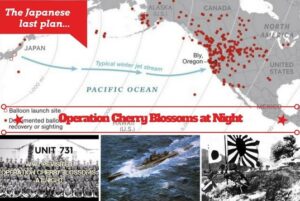 In 1945, a Japanese scientist named Shiro Ishii devised a plan of attack on civilians in the United States called Operation PX, also known as Operation Cherry Blossoms at Night. The plan was intended to wage biological warfare upon civilian population centers in the continental United States during the final months of World War II. The plan was devious, and heinous. Ishii planned to spread plague-infected fleas over Southern California using airplanes. The original operation was abandoned shortly after its planning on March 26, 1945. Then, with modifications, it was finalized and placed back of the table to be carried out. The plan was to be carried out on September 22nd, 1945. Unfortunately for Japan, their formal surrender date was August 15th, 1945, and the war was over.
In 1945, a Japanese scientist named Shiro Ishii devised a plan of attack on civilians in the United States called Operation PX, also known as Operation Cherry Blossoms at Night. The plan was intended to wage biological warfare upon civilian population centers in the continental United States during the final months of World War II. The plan was devious, and heinous. Ishii planned to spread plague-infected fleas over Southern California using airplanes. The original operation was abandoned shortly after its planning on March 26, 1945. Then, with modifications, it was finalized and placed back of the table to be carried out. The plan was to be carried out on September 22nd, 1945. Unfortunately for Japan, their formal surrender date was August 15th, 1945, and the war was over.
Originally, the Japanese Naval General Staff, led by Vice-Admiral Jisaburi Ozawa proposed Operation PX in December 1944. The code name for the operation came from the Japanese use of the code name PX for Pestis bacillus-infected fleas. The navy partnered with Lieutenant-General Shiro Ishii of Unit 731. Ishii possessed extensive experience on weaponizing pathogenic bacteria and human vulnerability to biological and chemical  warfare, and he was an extremely evil man, willing to use his knowledge for the murders of millions of people, especially if he thought it would bring him more power.
warfare, and he was an extremely evil man, willing to use his knowledge for the murders of millions of people, especially if he thought it would bring him more power.
In Ishii’s plan, they would use Seiran aircraft launched by submarine aircraft carriers upon the West Coast of the United States, targeting specifically, the cities of San Diego, Los Angeles, and San Francisco. The attack was to be utilizing weaponized bubonic plague, cholera, typhus, dengue fever, and other pathogens in a biological terror attack upon the population of the United States. The original plan was to have the submarine crews infect themselves and run ashore in a suicide mission. When the operation was shelved in March of 1945, it was because Umezu could see the future ramifications, and conveyed as much, when he said, “If bacteriological warfare is conducted, it will grow from the dimension of war between Japan and America to an endless battle of humanity against bacteria. Japan will earn the derision of the world.”
The idea of suicide attacks was tabled, due to opposition from Yoshijiro Umezu and Torashiro Kawabe, who did not want Ishii to die in a suicide attack and asked him to instead “wait for [the] next opportunity calmly”. It was then that Ishii devised a final plan using of the biological weapons and fleas…an attack that never took place either. The world never knew of the planned attack until long after the war, when Operation PX was first 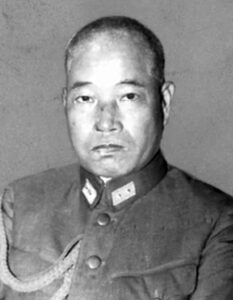
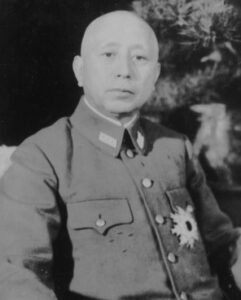 discussed in an interview by former captain Eno Yoshio, who was heavily involved with planning for the attack. He first spoke of it in an interview with Sankei on August 14, 1977. According to Yoshio, “This is the first time I have said anything about Operation PX, because it involved the rules of war and international law. The plan was not put into actual operation, but I felt that just the fact that it was formulated would cause international misunderstanding. I never even leaked anything to the staff of the war history archives at the Japanese Defense Agency, and I don’t feel comfortable talking about it even now. But at the time, Japan was losing badly, and any means to win would have been all right.” That interview goes to show how horrible some regimes can be.
discussed in an interview by former captain Eno Yoshio, who was heavily involved with planning for the attack. He first spoke of it in an interview with Sankei on August 14, 1977. According to Yoshio, “This is the first time I have said anything about Operation PX, because it involved the rules of war and international law. The plan was not put into actual operation, but I felt that just the fact that it was formulated would cause international misunderstanding. I never even leaked anything to the staff of the war history archives at the Japanese Defense Agency, and I don’t feel comfortable talking about it even now. But at the time, Japan was losing badly, and any means to win would have been all right.” That interview goes to show how horrible some regimes can be.
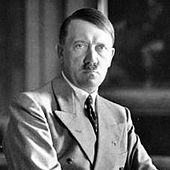
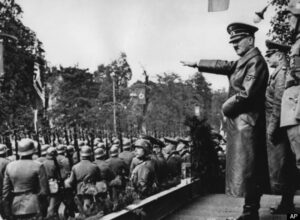 There are certain situations when I think citizenship is a must have element, and some that I think “natural-born” citizenship is absolutely essential. On September 15, 1935, German Jews were stripped of their citizenship, reducing them to mere “subjects” of the state. This heinous crime was carried out by the “president and chancellor of Germany,” Adolf Hitler. I use the quotation marks, because Hitler should never have been allowed to be in that office. Adolf Hitler became a citizen of Germany on February 25, 1932. Hitler, who was born in Austria, had immigrated to Germany in 1913, and renounced his Austrian citizenship in 1925. Hitler was a stateless nomad from 1925 to 1931, when he decided on the political ambition of becoming president and chancellor. That was when he decided to become a citizen, in fact that was the only reason he became a citizen. Hitler had a plan to take over and completely transform Germany, and his “transformation” was to be the worst thing for Germany. I think that is why a president needs to be a “natural-born” citizen. A president needs to have a connection to his country…a connection he is born into. Then and only then does he have the ability to care about the country…not that all presidents do, but they have that ability, because they belong. I’m sure some would disagree with me, but it will not change my mind.
There are certain situations when I think citizenship is a must have element, and some that I think “natural-born” citizenship is absolutely essential. On September 15, 1935, German Jews were stripped of their citizenship, reducing them to mere “subjects” of the state. This heinous crime was carried out by the “president and chancellor of Germany,” Adolf Hitler. I use the quotation marks, because Hitler should never have been allowed to be in that office. Adolf Hitler became a citizen of Germany on February 25, 1932. Hitler, who was born in Austria, had immigrated to Germany in 1913, and renounced his Austrian citizenship in 1925. Hitler was a stateless nomad from 1925 to 1931, when he decided on the political ambition of becoming president and chancellor. That was when he decided to become a citizen, in fact that was the only reason he became a citizen. Hitler had a plan to take over and completely transform Germany, and his “transformation” was to be the worst thing for Germany. I think that is why a president needs to be a “natural-born” citizen. A president needs to have a connection to his country…a connection he is born into. Then and only then does he have the ability to care about the country…not that all presidents do, but they have that ability, because they belong. I’m sure some would disagree with me, but it will not change my mind.
His citizenship actually came about when a fellow member of the Nazi Party appointed Hitler to a low-level government job that came with automatic citizenship. Once he was a citizen, Hitler’s new status allowed him to achieve his political goals. As a citizen, he could run for office. Hitler made sure that he was well liked, and by the middle of 1934, he was in complete control of Germany as Führer und Reichskanzler (leader and chancellor). He didn’t wait long to begin, and soon redefined citizenship to serve his beliefs. He was a hate-filled man, and he used race and pan-German heritage to give citizenship to, and take it from, large groups of people. Citizenship now depended on how Hitler felt about the people. Many would say that he was a white supremacist, but the reality was that there were many races of people he didn’t like, and many of them were white, so it wasn’t about color. As World War II began, Hitler’s views on German supremacy were fueling a military campaign that destroyed borders and entire populations all across Europe. People who were born in Germany and had been citizens all their lives were being systematically stripped of their citizenship, their rights, and their lives, just because they were Jews, blacks, gypsies, and some other races. Hitler’s goal was to rid the world of anyone who was not “pure-blooded” German stock. Never mind the fact that he was not!!
Practically from the minute he took office, Hitler began issuing what we would call “Executive Orders” that barely disrupted the lives of those “pure-blooded” German stock, other than to basically elevate them to the level of “masters” over anyone who did not qualify as “pure-blooded” German stock. His dream of a “pure-blooded” society soon became a nightmare for many. Many of the German “pure-blooded” German citizen didn’t agree with what he was doing, and some didn’t really understand what he was doing, exactly, but some of them saw it as an opportunity to take from the “unqualified” citizens, anything they wanted. They became brutal in their treatment of the “unqualified” citizens, especially the Jews.
Hitler began his persecution of the Jews within the first year of office. German Jews were excluded from many high-profile vocations, such as public office, journalism, radio, theater, film, and teaching, and even farming. The professions of law and medicine were also withdrawn slowly as opportunities. “Jews Not Welcome” signs were posted on shop and hotel windows, beer gardens, and other public areas. Known as the Nuremberg Laws, these discriminatory acts became a deep-seated part of the German culture, which in turn, making them even more far-reaching. Jews were forbidden to marry “Aryans” or engage in extramarital relations with them. Jews could not employ female Aryan servants if they were less than 35 years of age. Hunger soon became a part of Jewish life, because it became difficult even to buy food, as groceries, bakeries, and dairies would not admit Jewish customers. Even pharmacies refused to sell them medicines or drugs. Their lives soon began to simply spiral towards despair and eventual death.
At first, the outside world didn’t understand what they were seeing. Unemployment had dropped exponentially under Hitler’s early commandeering of the economy. Things actually looked better to the world. A very few, some foreign visitors, even some political opponents within Germany itself, saw these racist laws and practices for what they were, but most were beguiled into thinking it was merely a phase. They assumed that the “birth 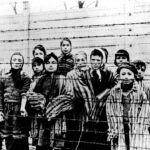
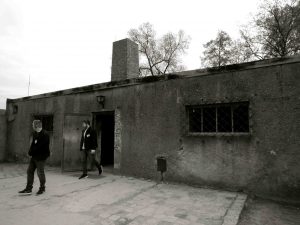 pains” of Hitler’s developing plans would eventually smooth out and the bad parts would fade away, as he began to focus more on the economy and less on race, but they were wrong, because Hitler was a very determined, and very focused dictator…and he was insane, as the world and the German people would soon find out. It is my opinion that even a seemingly good citizen, who is not “natural-born” is not a good candidate for president, because their ideas and plans for a nation they have no real stake in, will be very unlikely to produce good for the nation in the end.
pains” of Hitler’s developing plans would eventually smooth out and the bad parts would fade away, as he began to focus more on the economy and less on race, but they were wrong, because Hitler was a very determined, and very focused dictator…and he was insane, as the world and the German people would soon find out. It is my opinion that even a seemingly good citizen, who is not “natural-born” is not a good candidate for president, because their ideas and plans for a nation they have no real stake in, will be very unlikely to produce good for the nation in the end.
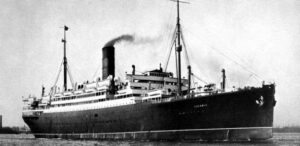 Probably one of the deadliest weapons the Nazis ever created, was the German U-Boat. With their code system, it was hard to track a U-boat, and so they snuck up on ships and sunk them. The U-boat wasn’t a ship. It was a submarine, so the ships didn’t know it was there until they saw the torpedo coming at them…if they saw it coming. Often, they didn’t see it coming, it just hit, and it was over. On September 12, 1942, a U-boat sunk the British troop ship, the RMS Laconia, killing more than 1,400 men. The commander of the German sub, Captain Werner Hartenstein, then realized that Italians POWs were among the passengers.
Probably one of the deadliest weapons the Nazis ever created, was the German U-Boat. With their code system, it was hard to track a U-boat, and so they snuck up on ships and sunk them. The U-boat wasn’t a ship. It was a submarine, so the ships didn’t know it was there until they saw the torpedo coming at them…if they saw it coming. Often, they didn’t see it coming, it just hit, and it was over. On September 12, 1942, a U-boat sunk the British troop ship, the RMS Laconia, killing more than 1,400 men. The commander of the German sub, Captain Werner Hartenstein, then realized that Italians POWs were among the passengers.
Like many other cruise ships, the Laconia, a former Cunard White Star ship was put to use to transport troops, including prisoners of war during World War II. RMS Laconia was in the South Atlantic bound for England when  it encountered U-156. The sub attacked, sinking the troop ship and imperiling the lives of more than 2,200 passengers. But as Hartenstein, the sub commander, was to learn from survivors he began taking onboard, among those passengers were 1,500 Italian POWs. Of course, it wouldn’t look good for Hartenstein to be responsible for endangering the lives of so many of his fellow Axis members, so he quickly put out a call to an Italian submarine and two other German U-boats in the area to help rescue the survivors.
it encountered U-156. The sub attacked, sinking the troop ship and imperiling the lives of more than 2,200 passengers. But as Hartenstein, the sub commander, was to learn from survivors he began taking onboard, among those passengers were 1,500 Italian POWs. Of course, it wouldn’t look good for Hartenstein to be responsible for endangering the lives of so many of his fellow Axis members, so he quickly put out a call to an Italian submarine and two other German U-boats in the area to help rescue the survivors.
Upon hearing of the incident, one French and two British warships rushed to the scene to aid in the rescue. The German subs immediately informed the Allied ships that they had surfaced for humanitarian reasons. The Allies wisely assumed it was a trap. With that, an American B-24 bomber, the Liberator, flying from its South Atlantic base on Ascension Island, saw the German sub and bombed it…despite the fact that Hartenstein had draped a Red Cross flag prominently on the hull of the surfaced sub. The U-156, damaged by the air attack, immediately 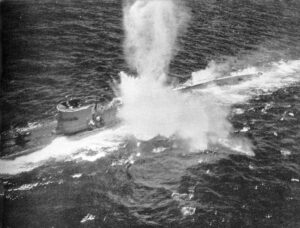 submerged. Admiral Karl Donitz, supreme commander of the German U-boat forces, had been monitoring the rescue efforts. He ordered that “all attempts to rescue the crews of sunken ships…cease forthwith.” Consequently, more than 1,400 of the RMS Laconia’s passengers, which included Polish guards and British crewmen, drowned. This marked the end of taking POWs from torpedoed ships. There were often men who survived these attacks, but they were given no chance of survival after the attack. I suppose war is war, and death is expected. On March 8, 1943, U-156 was sunk by PBY “Catalina” aircraft from Patrol Squadron Fifty-Three (VP-53), in the Atlantic Ocean, east of Barbados. There were five survivors from U-156.
submerged. Admiral Karl Donitz, supreme commander of the German U-boat forces, had been monitoring the rescue efforts. He ordered that “all attempts to rescue the crews of sunken ships…cease forthwith.” Consequently, more than 1,400 of the RMS Laconia’s passengers, which included Polish guards and British crewmen, drowned. This marked the end of taking POWs from torpedoed ships. There were often men who survived these attacks, but they were given no chance of survival after the attack. I suppose war is war, and death is expected. On March 8, 1943, U-156 was sunk by PBY “Catalina” aircraft from Patrol Squadron Fifty-Three (VP-53), in the Atlantic Ocean, east of Barbados. There were five survivors from U-156.
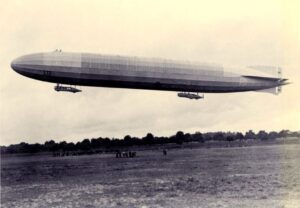 The first power-driven airship was built by a French inventor decades before the Zeppelin was developed by German inventor Ferdinand Graf von Zeppelin in 1900. The Zeppelin was a motor-driven rigid airship. The earlier airships were smaller, but Hilter always wanted the most innovative, largest, and deadliest designs of everything, with was likely the reason for the Zeppelin’s size. It was by far the largest airship ever constructed. Hitler didn’t care that size was exchanged for safety. The heavy steel-framed airships were vulnerable to explosion, because they had to be lifted by highly flammable hydrogen gas instead of non-flammable helium gas.
The first power-driven airship was built by a French inventor decades before the Zeppelin was developed by German inventor Ferdinand Graf von Zeppelin in 1900. The Zeppelin was a motor-driven rigid airship. The earlier airships were smaller, but Hilter always wanted the most innovative, largest, and deadliest designs of everything, with was likely the reason for the Zeppelin’s size. It was by far the largest airship ever constructed. Hitler didn’t care that size was exchanged for safety. The heavy steel-framed airships were vulnerable to explosion, because they had to be lifted by highly flammable hydrogen gas instead of non-flammable helium gas.
During World War I, the Zeppelins were used as bombers, and the Germans had great success bombing the British Isles with the Zeppelin over the course of 1915 and 1916. The first such 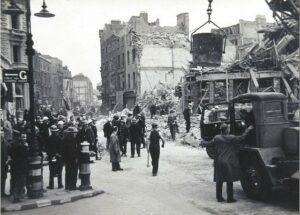 attack on London came on May 31, 1915. That bombing killed 28 people and wounded 60 more. The Germans killed a total of 550 Britons with aerial bombing by May 1916. During one such attack, on September 8, 1915, Heinrich Mathy was the commander of the famed German Zeppelin L13, bombing Aldersgate in central London. His bombs killed 22 people and causing £500,000 worth of damage.
attack on London came on May 31, 1915. That bombing killed 28 people and wounded 60 more. The Germans killed a total of 550 Britons with aerial bombing by May 1916. During one such attack, on September 8, 1915, Heinrich Mathy was the commander of the famed German Zeppelin L13, bombing Aldersgate in central London. His bombs killed 22 people and causing £500,000 worth of damage.
While Mathy was waiting on repairs to his ship, following a bombing run on August 24-25, 1916, he received word that the British had managed for the first time to shoot down a Zeppelin, using incendiary bullets. While he was a fearless pilot, Mathy saw the writing on the wall, and said, “It is only a question of time before we join  the rest. Everyone admits that they feel it. Our nerves are ruined by mistreatment. If anyone should say that he was not haunted by visions of burning airships, then he would be a braggart.” I’m sure he knew that the Zeppelin was a dangerous ship anyway, especially in a crash, but this new danger made matters much worse. As Mathy had predicted, his Zeppelin L31True to his prediction, Mathy’s L31 was shot down during a raid on London on the night of October 1-2, 1916. He is buried in Staffordshire, in a cemetery constructed by the British for the burial of Germans killed on British soil during both World Wars.
the rest. Everyone admits that they feel it. Our nerves are ruined by mistreatment. If anyone should say that he was not haunted by visions of burning airships, then he would be a braggart.” I’m sure he knew that the Zeppelin was a dangerous ship anyway, especially in a crash, but this new danger made matters much worse. As Mathy had predicted, his Zeppelin L31True to his prediction, Mathy’s L31 was shot down during a raid on London on the night of October 1-2, 1916. He is buried in Staffordshire, in a cemetery constructed by the British for the burial of Germans killed on British soil during both World Wars.

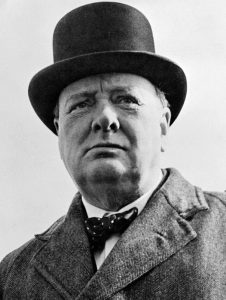 I think we all have one…a second career, or a career that could have been, had we chosen to take a different road in life. Some people actually step back from the career they have, sometimes, to pursue the one that should have been, and others simply know that they could have, if they had chosen to. I was one of those people. I spent much of my working years as an insurance agent, and a good one, I believe, but after spending thirteen years as a caregiver, I also know that I could have been a nurse, had I chosen that road. My daughter, Corrie Petersen chose to make that journey transition, and now she is a nurse, after spending those same thirteen years helping my take care of her grandparents, along with her sister, Amy Royce, children Chris and Josh, niece, Shai Royce, nephew Caalab Royce, and many other family caregivers in our Caregiving Villages, but none of the rest of us made that second career choice.
I think we all have one…a second career, or a career that could have been, had we chosen to take a different road in life. Some people actually step back from the career they have, sometimes, to pursue the one that should have been, and others simply know that they could have, if they had chosen to. I was one of those people. I spent much of my working years as an insurance agent, and a good one, I believe, but after spending thirteen years as a caregiver, I also know that I could have been a nurse, had I chosen that road. My daughter, Corrie Petersen chose to make that journey transition, and now she is a nurse, after spending those same thirteen years helping my take care of her grandparents, along with her sister, Amy Royce, children Chris and Josh, niece, Shai Royce, nephew Caalab Royce, and many other family caregivers in our Caregiving Villages, but none of the rest of us made that second career choice.
Sir Winston Leonard Spencer-Churchill was a British statesman, soldier, and writer who served as Prime Minister of the United Kingdom twice, from 1940 to 1945 during the Second World War, and again from 1951 to 
 1955. Apart from two years between 1922 and 1924, he was a Member of Parliament from 1900 to 1964 and represented a total of five constituencies. He was also a well-known war strategist, and a part of the reason that World War II ended the way that it did. One would think that he knew exactly what his one and only career was, and that he fulfilled his destiny, but he also had another career living inside of him, and some say that he missed his calling. Sir Winston Leonard Spencer-Churchill was a very talented artist. He actually painted 500 paintings, 50 of which were displayed professionally. In fact, it was Picasso, himself, who said that Sir Winston Leonard Spencer-Churchill missed his true calling, and very much could have chosen art as his career. My daughter, Amy Royce could have too, I think, as could my son-in-law, Kevin Petersen, and a number of others in my family. I have almost zero talent when it comes to art, but I am very impressed with those in my family
1955. Apart from two years between 1922 and 1924, he was a Member of Parliament from 1900 to 1964 and represented a total of five constituencies. He was also a well-known war strategist, and a part of the reason that World War II ended the way that it did. One would think that he knew exactly what his one and only career was, and that he fulfilled his destiny, but he also had another career living inside of him, and some say that he missed his calling. Sir Winston Leonard Spencer-Churchill was a very talented artist. He actually painted 500 paintings, 50 of which were displayed professionally. In fact, it was Picasso, himself, who said that Sir Winston Leonard Spencer-Churchill missed his true calling, and very much could have chosen art as his career. My daughter, Amy Royce could have too, I think, as could my son-in-law, Kevin Petersen, and a number of others in my family. I have almost zero talent when it comes to art, but I am very impressed with those in my family 
 who do.
who do.
I suppose that a second career that is never a road taken, would end up being called a “hobby” sometimes, although, I would not consider caregiving a “hobby” in any way, but art could fall into that category…as could writing, which I guess could have been a third career for me. Strangely, I don’t really consider myself to be an author, because I have never published a book. Is internet blogging of stories, publishing? Maybe. And maybe we all have many talents that could easily have turned into careers, had we decided to go down that road, or another road. Maybe, “That Second Career” isn’t really even the right title, nevertheless, it is the title.
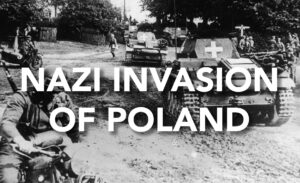 As we all know, Adolph Hitler was a liar and a murderer. He really never made a move that wasn’t calculated and devious. On September 1, 1939, German forces under the control of Adolf Hitler bombarded Poland on land and from the air. The invasion was more than just a taking of territory. Hitler knew that he might need that area later, and so he did. Hitler had been murdering people that didn’t fit into his mold of “life that had value” and that included Jews, the mentally or physically handicapped, and later gypsies and other ethnicities. Basically, he wanted to eliminate anyone that wasn’t Aryan. Aryan is a word relating to a hypothetical ethnic type illustrated by or descended from early speakers of Indo-European languages. To Hitler it meant white, with blond hair and blue eyes. Oddly, while Hitler had blue eyes, his hair was brown. Somehow that “problem” with his definition of Aryan didn’t concern Hitler. I guess he was happy to be a “special Aryan.” In reality, there are different kinds of Aryans. They can be found with blond, red, brown, white, or black hair, so that wasn’t really an issue either. Hitler considered himself Aryan because he was a native German-speaker, and he knew the definition of “Aryan” as it was used in those days. I don’t think it was ever about Aryan, per se, but rather about getting rid of any group that he decided that he didn’t like.
As we all know, Adolph Hitler was a liar and a murderer. He really never made a move that wasn’t calculated and devious. On September 1, 1939, German forces under the control of Adolf Hitler bombarded Poland on land and from the air. The invasion was more than just a taking of territory. Hitler knew that he might need that area later, and so he did. Hitler had been murdering people that didn’t fit into his mold of “life that had value” and that included Jews, the mentally or physically handicapped, and later gypsies and other ethnicities. Basically, he wanted to eliminate anyone that wasn’t Aryan. Aryan is a word relating to a hypothetical ethnic type illustrated by or descended from early speakers of Indo-European languages. To Hitler it meant white, with blond hair and blue eyes. Oddly, while Hitler had blue eyes, his hair was brown. Somehow that “problem” with his definition of Aryan didn’t concern Hitler. I guess he was happy to be a “special Aryan.” In reality, there are different kinds of Aryans. They can be found with blond, red, brown, white, or black hair, so that wasn’t really an issue either. Hitler considered himself Aryan because he was a native German-speaker, and he knew the definition of “Aryan” as it was used in those days. I don’t think it was ever about Aryan, per se, but rather about getting rid of any group that he decided that he didn’t like.
Hitler’s main purpose for the invasion of Poland was to regain lost territory and ultimately rule their eastern neighbor. Mostly, however, Hitler wanted the world to know exactly how he planned to wage war. This would become the “blitzkrieg” strategy. The Blitzkrieg was a term used to describe “a method of offensive warfare designed to strike a swift, focused blow at an enemy using mobile, maneuverable forces, including armored  tanks and air support. Such an attack ideally leads to a quick victory, limiting the loss of soldiers and artillery. After the German forces had plowed their way through, devastating a swath of territory, infantry moved in, picking off any remaining resistance.”
tanks and air support. Such an attack ideally leads to a quick victory, limiting the loss of soldiers and artillery. After the German forces had plowed their way through, devastating a swath of territory, infantry moved in, picking off any remaining resistance.”
Hitler was methodical. He established a base of operations within the target country. Then, he immediately began setting up “security” forces to take out anyone who disagreed with his Nazi ideology, whether racial, religious, or political. He set up concentration camps for slave laborers and the extermination of uncooperative civilians. It didn’t take long for the target nation, in this case Poland to become a conquered nation under German rule. Just one day after the German invasion of Poland, Hitler was busy setting up SS “Death’s Head” regiments to terrorize the people. He was preparing for his planned terror.
The Polish army tried to fight back, but they made several severe strategic miscalculations in those early days. Even with an army of 1 million soldiers, the lack of the necessary equipment was a severe detriment to the Polish forces as they attempted to take the Germans head-on, when maybe they should have fallen back to defensive positions. I think the natural way to face an enemy, is head-on. We try to “show no fear” when attacked, but in the end, this thinking, while admirable was probably behind the times, at least in battle, and the brave Polish soldiers were no match for the overwhelming and modern-mechanized German forces. To make matters worse, any hope the Polish soldiers might have had of a Soviet counter-response was lost with  the signing of the Ribbentrop-Molotov Nonaggression Pact…”a non-aggression pact between Nazi Germany and the Soviet Union that partitioned Eastern Europe between them. The pact was signed in Moscow on 23 August 1939 by German Foreign Minister Joachim von Ribbentrop and Soviet Foreign Minister Vyacheslav Molotov and was officially known as the Treaty of Non-Aggression between Germany and the Union of Soviet Socialist Republics. Unofficially, it has also been referred to as the Hitler–Stalin Pact, Nazi–Soviet Pact or Nazi–Soviet Alliance.” Germany invaded Poland on September 1, 1939. Great Britain responded with bombing raids over Germany three days later.
the signing of the Ribbentrop-Molotov Nonaggression Pact…”a non-aggression pact between Nazi Germany and the Soviet Union that partitioned Eastern Europe between them. The pact was signed in Moscow on 23 August 1939 by German Foreign Minister Joachim von Ribbentrop and Soviet Foreign Minister Vyacheslav Molotov and was officially known as the Treaty of Non-Aggression between Germany and the Union of Soviet Socialist Republics. Unofficially, it has also been referred to as the Hitler–Stalin Pact, Nazi–Soviet Pact or Nazi–Soviet Alliance.” Germany invaded Poland on September 1, 1939. Great Britain responded with bombing raids over Germany three days later.

 When countries choose sides in a war, there isn’t normally much chance that they will switch sides, but that is exactly what happened to Romania…and in fact, there were four countries that switched sides in that war, so maybe it isn’t so uncommon after all. At the start of the war Romania was allied and Poland and pro-British. They were trying to stay neutral, but that wasn’t easy. As the war progressed, Romania became more and more concerned about being overrun by the Soviet Union and the Fascist elements already in Romania. Finally, the decision was made to adopt a pro-German dictatorship and became an ‘affiliate state’ of the Axis Powers. The Romanian government signed the Tripartite Pact in November 1940. During the time that Romania supported the Axis powers, they supplied Nazi Germany and the Axis armies with oil, grain, and industrial products. Also, numerous train stations in the country, such as Gara de Nord in Bucharest, served as transit points for troops departing for the Eastern Front.
When countries choose sides in a war, there isn’t normally much chance that they will switch sides, but that is exactly what happened to Romania…and in fact, there were four countries that switched sides in that war, so maybe it isn’t so uncommon after all. At the start of the war Romania was allied and Poland and pro-British. They were trying to stay neutral, but that wasn’t easy. As the war progressed, Romania became more and more concerned about being overrun by the Soviet Union and the Fascist elements already in Romania. Finally, the decision was made to adopt a pro-German dictatorship and became an ‘affiliate state’ of the Axis Powers. The Romanian government signed the Tripartite Pact in November 1940. During the time that Romania supported the Axis powers, they supplied Nazi Germany and the Axis armies with oil, grain, and industrial products. Also, numerous train stations in the country, such as Gara de Nord in Bucharest, served as transit points for troops departing for the Eastern Front.
With all of this, Romania caught the eye of the Allies in 1943, and soon became a target for their aerial bombardment. One of the most notable air bombardments was the attack on the oil fields of Ploie?ti on August 1, 1943, known as Operation Tidal Wave. On April 4 and 15, 1944, Bucharest was subjected to intense Allied bombardment. On August 23, 1944, King Michael I removed the government of Ion Antonescu and declared Romanian support to the Allies. Then the Luftwaffe bombed the city Bucharest on August 24 and 25, 1944 in direct response to the Romania’s decision to switch sides. Some experts believe that by switching sides Romania helped shorten the war by several months. I’m sure that Romania was glad to be on the winning side of the war.
Romania was not the only nation to switch sides in Worls War II. They were Bulgaria, Finland, and Italy. Bulgaria also signed the Tripartite Pact in March of 1941, but Finland never signed it, but was nonetheless a co-belligerent on the side of the Axis Powers. Finland signed the Anti-Comintern Pact, an anti-communist agreement of mainly fascist powers, in November 1941. Italy had its own imperial ambitions, which were partly 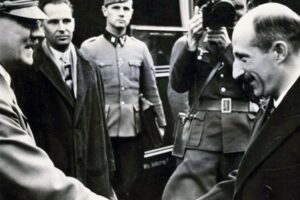
 based on the Roman Empire and similar to the German policy of lebensraum, which clashed with those of Britain and France. No matter wat their aspirations were, all of these nations decided that the ways of Germany and Hitler were simply not ways they could live with, so they switched sides, joined the Allied Nations, further weakened Hitler to the point of causing his demise.
based on the Roman Empire and similar to the German policy of lebensraum, which clashed with those of Britain and France. No matter wat their aspirations were, all of these nations decided that the ways of Germany and Hitler were simply not ways they could live with, so they switched sides, joined the Allied Nations, further weakened Hitler to the point of causing his demise.
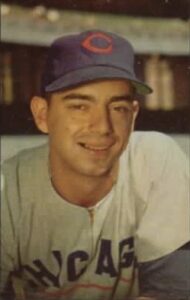 The world was a crazy place on August 20, 1945. It was just eleven days after the atomic bombing of Nagasaki, Japan. The world was a little “scary.” Just knowing that entire towns could be blown off the face of the earth in an instant, changed the whole perspective of life as we knew it. The war was almost over. By September 2, 1945, World War II would be a blip in the rearview mirror of history. Maybe it was time to look for something…happy, for a change.
The world was a crazy place on August 20, 1945. It was just eleven days after the atomic bombing of Nagasaki, Japan. The world was a little “scary.” Just knowing that entire towns could be blown off the face of the earth in an instant, changed the whole perspective of life as we knew it. The war was almost over. By September 2, 1945, World War II would be a blip in the rearview mirror of history. Maybe it was time to look for something…happy, for a change.
Enter Brooklyn Dodgers utility player, Tommy Brown. He was a local kid, who was born December 6, 1927, in the Bensonhurst section of Brooklyn. Brown never knew his father and was raised primarily by an aunt and uncle. That was probably the best thing that could have happened. Brown’s upbringing was such that he was able to make something of himself. He started playing baseball, and he was good enough to be called up to the Majors. Brown made his debut with the Dodgers in 1944, when he was just 16 years old. It was an unusual time, because during World War II, millions of men served overseas, so the ball players were serving in the military. Men like future Hall of Famers Ted Williams and Yogi Berra were among them. That left a group of aspiring teenagers in line for the majors in an almost unheard of shot in the big leagues. Fifteen-year-old Joe Nuxhall was also called up and pitched 2/3 of an inning for the Cincinnati Reds in the summer of 1944. It would be almost like they were replacement players.
On August 3, 1944, while playing for the Newport News (Virginia) Builders of the Class B Piedmont League, Brown got the call that changed not only his life, but baseball history forever. He was headed to the majors,  with the Brooklyn Dodgers. Apparently, they had tried Bobby Bragan at shortstop but were looking for someone more mobile. Dodgers’ manager Leo Durocher told Brown that day he would play both games of a doubleheader against the Chicago Cubs. After that shock wore off…for about a second, “Brown, according to a bio on the Society of American Baseball Research web site, advised his manager that he had ridden the train all night, ‘but Leo responded that he didn’t care.'” I guess they were desperate. Brown became the youngest non-pitcher ever to play in a major league game, and the second-youngest overall after Joe Nuxhall, who was 15 years and 316 days old when he first appeared as a pitcher for the Cincinnati Reds on June 10, 1944. He got two hits in eight at-bats as the Cubs beat the Dodgers in both games, 6-2 and 7-1. In 1944, he played a total of 46 games, hitting .164 without a homer. Brown, nicknamed “Buckshot,” threw and batted right-handed. He stood 6 feet 1 inch tall and weighed 170 pounds. Then, on August 20, 1945, he hit a home run…his team’s only run in an 11-1 loss to the Pittsburgh Pirates. He finished that season with a .245 batting average. That home run may not seem like much, but remember that Brown was just 16 years old at the time. With that “homer” to
with the Brooklyn Dodgers. Apparently, they had tried Bobby Bragan at shortstop but were looking for someone more mobile. Dodgers’ manager Leo Durocher told Brown that day he would play both games of a doubleheader against the Chicago Cubs. After that shock wore off…for about a second, “Brown, according to a bio on the Society of American Baseball Research web site, advised his manager that he had ridden the train all night, ‘but Leo responded that he didn’t care.'” I guess they were desperate. Brown became the youngest non-pitcher ever to play in a major league game, and the second-youngest overall after Joe Nuxhall, who was 15 years and 316 days old when he first appeared as a pitcher for the Cincinnati Reds on June 10, 1944. He got two hits in eight at-bats as the Cubs beat the Dodgers in both games, 6-2 and 7-1. In 1944, he played a total of 46 games, hitting .164 without a homer. Brown, nicknamed “Buckshot,” threw and batted right-handed. He stood 6 feet 1 inch tall and weighed 170 pounds. Then, on August 20, 1945, he hit a home run…his team’s only run in an 11-1 loss to the Pittsburgh Pirates. He finished that season with a .245 batting average. That home run may not seem like much, but remember that Brown was just 16 years old at the time. With that “homer” to 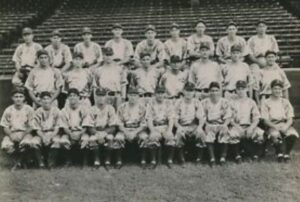 his credit, Brown remains the youngest player to homer in a Major League Baseball game, a record that will likely never be broken.
his credit, Brown remains the youngest player to homer in a Major League Baseball game, a record that will likely never be broken.
Brown played seven more seasons in the big leagues, spending time with the Philadelphia Phillies and Cubs after leaving Brooklyn. He never became anything more than a part-time player, but he will always have the distinction of youngest person to homer to his credit. Brown married a woman from Nashville and stayed in that area after his playing career ended. He worked at the Ford Glass Plant for thirty-five years, before retiring in 1993. He continues to live in retirement in Brentwood, Tennessee.
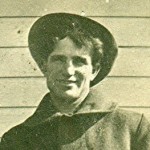
 When I think of my grandfather, Allen Luther Spencer, who was my dad, Allen Lewis Spencer’s dad, I usually think of his carpenter days with the Great Northern Railroad. That is because that was the job he held for probably most of his working years. I have seen a desk that he made, and it is beautiful, but of course, there weren’t many, or maybe not any, desks on railroad trains. Mostly he made things like seats, probably, unupholstered, which I would find extremely uncomfortable these days. I have ridden on trains from that era, and those old bench seats were not meant for long trips. Still, the workmanship is interesting, and they were well designed. I don’t know what kind of seats or other things my grandfather build, but I know that he was a talented carpenter.
When I think of my grandfather, Allen Luther Spencer, who was my dad, Allen Lewis Spencer’s dad, I usually think of his carpenter days with the Great Northern Railroad. That is because that was the job he held for probably most of his working years. I have seen a desk that he made, and it is beautiful, but of course, there weren’t many, or maybe not any, desks on railroad trains. Mostly he made things like seats, probably, unupholstered, which I would find extremely uncomfortable these days. I have ridden on trains from that era, and those old bench seats were not meant for long trips. Still, the workmanship is interesting, and they were well designed. I don’t know what kind of seats or other things my grandfather build, but I know that he was a talented carpenter.
Grandpa met my grandmother, Anna Schumacher Spencer, through her brother, Albert Schumacher, who was his good friend. Once he got to know the family, he did his best to be a good son-in-law to my great grandparents, Carl and Albertine Schumacher, and brother-in-law to the younger kids. My great grandparents had a 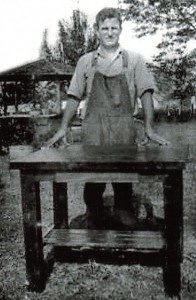 ten-acre lake on their property in those days, but it wasn’t really anything the kids could exactly enjoy, so my grandfather decided to seed the lake with fish, so they could go fishing, and it would provide food for the family for years to come. He also built a flat-bottom boat so the kids could actually go out on the lake to do their fishing. The boat isn’t surprising, since he was a carpenter, but seeding the lake. Who knew that he knew anything about that?
ten-acre lake on their property in those days, but it wasn’t really anything the kids could exactly enjoy, so my grandfather decided to seed the lake with fish, so they could go fishing, and it would provide food for the family for years to come. He also built a flat-bottom boat so the kids could actually go out on the lake to do their fishing. The boat isn’t surprising, since he was a carpenter, but seeding the lake. Who knew that he knew anything about that?
Life wasn’t always easy for my grandparents. They went through a number of tough years in history. It’s hard for me to believe, but my grandpa was born just fourteen years after the Civil War ended. Our nation had witnessed its first Presidential assassination (later, there would be four more, and of these, my grandfather would be alive for two). The nation was likely still reeling from the Lincoln assassination in 1865, when in 1881, James Garfield was assassinated, followed by William McKinley in 1901. In my lifetime, we have had one successful assassination, when President Kennedy was assassinated. The identity of the perpetrator or perpetrators is still a source of contention on that one to this day. There have been plots and attempts on most presidents, but we may not have heard of most of them. Politics can be a dangerous game.
My grandparents also lived through World War I and II, as well as the “Roaring Twenties” and the Great Depression. Grandpa spent time farming, as well as the oil fields of Texas, the lumber industry of Northern Minnesota, and the Great Northern Railroad. He even did a little time in the fur trade, trapping a number of animals, including skunks (wow), but I don’t think he found that to be very successful…and I’m sure the smell 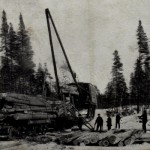
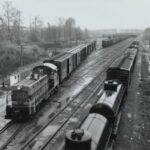 was not his favorite thing either. Looking back at Grandpa’s life, I would have to say that he led an “interesting” sort of life. He had, what could be classified as several careers before he retired. I never met my grandfather. He passed away in 1951. I think that when I meet him in Heaven, I will spend quite some time asking him about his life. I think that as a “history buff,” I will really find his life an interesting story. Today is the 144th anniversary of my grandfather’s birth. Happy birthday in Heaven, Grandpa Spencer. We love and miss you very much.
was not his favorite thing either. Looking back at Grandpa’s life, I would have to say that he led an “interesting” sort of life. He had, what could be classified as several careers before he retired. I never met my grandfather. He passed away in 1951. I think that when I meet him in Heaven, I will spend quite some time asking him about his life. I think that as a “history buff,” I will really find his life an interesting story. Today is the 144th anniversary of my grandfather’s birth. Happy birthday in Heaven, Grandpa Spencer. We love and miss you very much.

 Most of us would never think of using an elephant in a battle, but James Howard Williams, also known as Elephant Bill, who was a British soldier and elephant expert in Burma thought about it. Born on November 15, 1897, at Saint Just, Cornwall, he was the son of a Cornish mining engineer, who had returned to Cornwall from South Africa, and his wife, a Welshwoman. Williams went to college at Queen’s College in Taunton, and following in his brother’s footsteps, studied at Camborne School of Mines. He then went on to serve as an officer in the Devonshire Regiment of the British Army in the Middle East during the First World War and in Afghanistan from 1919 to 1920. Williams served with the Camel Corps and as transport officer in charge of mules. The military was very different then, from what we know today. After his service was over, he decided to join the Bombay-Burmah Trading Corporation as a forester working with elephants to extract teak logs. Little did he know that this would be a life changing decision for him.
Most of us would never think of using an elephant in a battle, but James Howard Williams, also known as Elephant Bill, who was a British soldier and elephant expert in Burma thought about it. Born on November 15, 1897, at Saint Just, Cornwall, he was the son of a Cornish mining engineer, who had returned to Cornwall from South Africa, and his wife, a Welshwoman. Williams went to college at Queen’s College in Taunton, and following in his brother’s footsteps, studied at Camborne School of Mines. He then went on to serve as an officer in the Devonshire Regiment of the British Army in the Middle East during the First World War and in Afghanistan from 1919 to 1920. Williams served with the Camel Corps and as transport officer in charge of mules. The military was very different then, from what we know today. After his service was over, he decided to join the Bombay-Burmah Trading Corporation as a forester working with elephants to extract teak logs. Little did he know that this would be a life changing decision for him.
Williams learned so much about the elephants in Burma, that it was during that time he acquired his nickname, “Elephant Bill.” While his biggest calling was his work with the Fourteenth Army during the Burma Campaign of World War II, he was also known for his 1950 book Elephant Bill. He was made a Lieutenant-Colonel, mentioned in dispatches three times, and was awarded the OBE in 1945. His interest in elephants came after he read a book by Hawkes, called “The Diseases of the Camel and the Elephant” and decided on the postwar job in Burma. Initially he was at a camp on the banks of the Upper Chindwin River in Upper Burma. There, Williams was responsible for seventy elephants and their oozies (in Burma an oozie was an elephant trainer) in ten camps, in an area of about 400 square miles in the Myittha Valley, in the Indaung Forest Reserve. The camps were 6 to 7 miles apart. Between the camps were hills, three to four thousand feet high and filled with teak. To mill them, one tree was killed by ring-barking the base, and then felled. The three-year-old trees were mature and were now light enough to float. The logs were hauled by elephant (known as “sappers”) to a waterway, then floated down to Rangoon or Mandalay. The elephants were needed by the Royal Engineers for use in bridge building in places where heavy equipment could otherwise not be brought in, the Royal Indian Army Service Corps wanted them to be regarded simply as a branch of transport, but they also had great value in rescue. Elephants were so important to the harvesting process, that one elephant could be sold for $150,000, which is $2000 in American dollars. The elephants were as big a commodity as the teak wood. Believe it or not, teak was “as important a munition of war as steel,” so its extraction was an essential industry.
While elephants were most often used to extract the teak from the forests, they were used for another important extraction during World War II. When Japan entered the war, it was expected that they would be held in Malaya and Singapore. While many people were critical of them, the Bombay Burma Corporation arranged evacuation of European women and children, even though the government had no such plans. That evacuation took place in 1942, from February till the end of April. The retreat from Burma was to Assam via Imphal. The road to Assam went up the Chindwin to Kalewa, then up the Kabaw Valley to Tamu, and across five thousand-foot-mountains into Manipur and the Imphal Plain. During this time, Williams was attached to one evacuation party, which also included his wife and children. The Kabaw Valley was nicknamed “The Valley of Death” because of the hundreds of refugees who died there from exhaustion, starvation, cholera, dysentery, and smallpox. Nevertheless, while many people died along the way, many were also saved due to the elephant evacuation process. The well known “elephant whisperer” and his best beloved helpers waged guerrilla warfare and carried refugees to safety. They sometimes had to fight, possibly even while working to help the refugees to escape. He was a Burmese speaker with knowledge of Burma, including the Irrawaddy River area and jungle tracks, which gave him a distinct edge when it came to getting precious human cargo out of the danger zones.
Not all treatment of elephants during that time was humane, and many elephants that were captured by the Japanese, and later recaptured by Williams’ group and others like it, had to be “cured” after being attacked by Allied fighters when they were used in Japanese warfare, or treated for acid burns from wireless batteries carried on their backs in straw-lined boxes. I’m sure it was hard for the handlers to see their precious elephants 
 after such treatment. After World War II Williams retired to Saint Buryan, Cornwall, as an author and market gardener. He married Susan Margaret Rowland in 1932 after they met in Burma; they had a son, Treve and daughter, Lamorna while in Burma. After his death, on July 30, 1958, his wife Susan Williams wrote of her life with him in “The Footprints of Elephant Bill.”
after such treatment. After World War II Williams retired to Saint Buryan, Cornwall, as an author and market gardener. He married Susan Margaret Rowland in 1932 after they met in Burma; they had a son, Treve and daughter, Lamorna while in Burma. After his death, on July 30, 1958, his wife Susan Williams wrote of her life with him in “The Footprints of Elephant Bill.”

